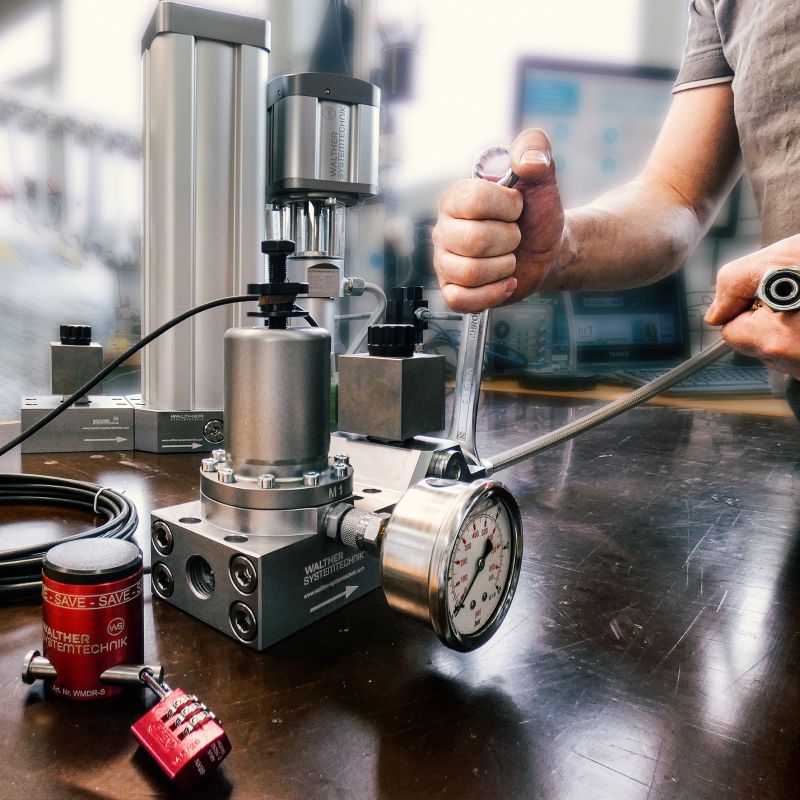Saved in the pulse of time: Non-contact dispensing of media
9 May 2008, 12:00:00
Germersheim, May 9, 2008: Precise and reproducible application of media with varying viscosities is essential for many production and assembly processes.
The increasing automation and miniaturization in nearly every industrial sector, coupled with rising prices for various media, necessitate the contactless dispensing of minute quantities. Existing systems in the market are often complex and costly. The new Micro Point Pulse Valve (MPP) offers a solution, surpassing the performance of more expensive devices with its compact dimensions and reduced cost.
The market has seen several technologies for media dispensing, with contactless dispensing becoming increasingly focused on both new designs and integration into existing systems.
It's crucial for many processes to accurately apply even tiny amounts of highly viscous media. The MPP is preferred for the contactless pulsing of media of various viscosities, such as greases, oils, adhesives, paints, fluxes, and solvents. The continuous miniaturization of components and rapidly shortening cycle times place ever-higher demands on the technical equipment for media application. Currently, very few systems offer contactless dispensing that combines precise functionality with a solid price point. This synergy has been achieved with the Micro Point Pulse Valve developed by Walther Systemtechnik GmbH.
The valves were developed from a full-stream variant for applying beads and larger quantities of media. This was based on extensive endurance testing that exposed the weaknesses of the initial system. The accuracy and placement of the media could not be considered process-safe before optimization.
The main goal of the development was to create a system for generating small quantities of media. This involved altering individual system components in terms of materials and geometries to achieve significantly longer service lives.
The objective was to develop a market-ready product from the initial system, achieving not only a certain cycle number but also reproducible dispensing results throughout the test series.
Endurance tests were conducted with partially highly viscous, pasty media. The results were recorded through weight measurement and visual inspection. Compared to the original component, the quantities could be significantly reduced. Variations in application pattern and quantity were less than 10 percent from the original value. The tests worked with quantities of 700µg, yet the system also allows for the application of larger amounts and still realizes a bead-shaped media application.
In single dosing, quantities up to 0.5g were applied. Even during operation, the quantity can be quickly adjusted by altering the detent pin.
Nozzles with diameters ranging from 0.3mm to 2.0mm are easily interchangeable in a short time. The valve is designed for material pressures up to 100bar.
The valve's drive is maintenance-free, and the overall system's maintenance and cleaning are straightforward. Depending on the media, the system can accurately pulse free-flying media elements over a distance of more than 100mm. This not only saves significant media costs but also time in the dispensing process. Contactless application further shortens throughput times in assembly processes and processing cycles. The travel distances required for contact dispensing are eliminated.
Another advantage is the prevention of grease carryover, ensuring cleanliness and medium application only where selected on the component.
The MPP offers a cost-effective alternative to the current state of technology, providing numerous advantages.
Tests with the MPP achieved significantly more accurate dispensing results in terms of quantity and placement than comparable but much more expensive competitive products. Compared to the competition, no heating was required. Heating is not always permissible due to fluid properties, as it can lead to separation of components or changes in the medium's characteristics. In medical technology, heating is not always feasible as it could alter the active ingredients.
However, unlike the expensive solution, optional heating can be provided. With fast cycle times of up to 40Hz, integration into existing continuous processes is possible, as is the supplementation of individual manual workstations.
The precise and safe operation ensures a clean working environment. Numerous systems have been in industrial use for several months.
A major German dowel manufacturer uses the technology to apply 30mg of lubricant to components, preparing them for further processing. Over 115,000 components per day are treated with the required amount of lubricant in a shift operation.
An electronics component manufacturer uses the technology to apply a contact grease amount of 300µg before final assembly.
Depending on the media, additional options can be used. The variability in installation and the generation of free-flying media elements open up a wide range of applications. The minimization of the dispensed quantity makes applications in microtechnology or microelectronics conceivable, as well as in the food industry.
Due to the generation of the smallest free-flying media elements and the associated sterility, the technology is suitable for use in medical technology.
Besides contactless dispensing of small quantities, it is also possible to dispense large amounts, allowing for significant time savings in filling large storage areas. The very fast media output makes it conceivable to lubricate machines or machine parts during operation.
This could extend maintenance intervals and significantly reduce associated downtime. Otherwise, mandatory maintenance-related disassembly for lubricating moving parts can be specifically minimized. The enormous time savings in dispensing, due to the eliminated travel movements, combined with material savings due to precise operation, result in very short amortization periods. Further development work aims to also point-dose low-viscosity media in small quantities.
This raises the question: Can the MPP replace traditional contact dispensing in many areas?


